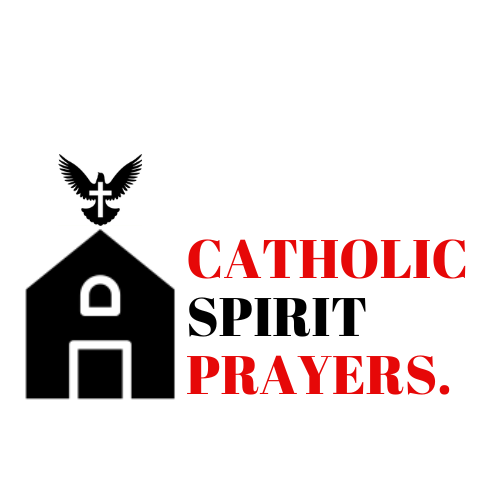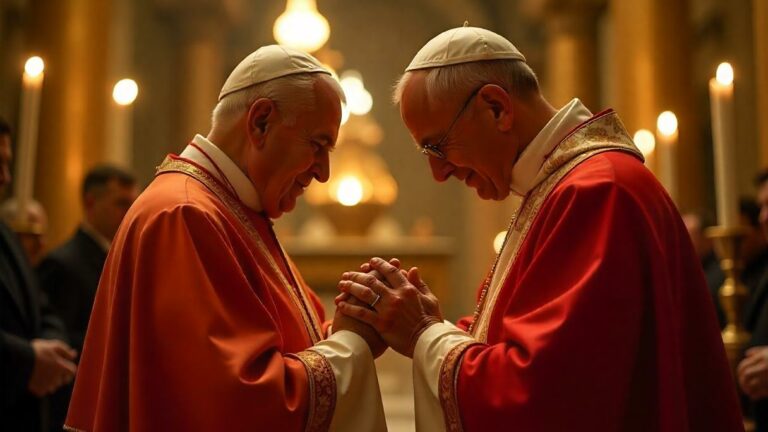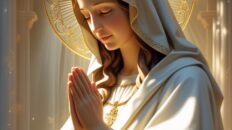Introduction: A Moment the World Watches
The election of a new pope is one of the most sacred and widely followed events in the world. Millions of Catholics and curious onlookers turn their eyes to Vatican City, waiting to see the white smoke rise from the Sistine Chapel—a sign that a new leader of the Catholic Church has been chosen.
But what actually happens inside those closed doors? How is a pope elected? What does white smoke mean? This guide breaks down the papal election process, from conclave to white smoke, in a way that’s clear and easy to understand.
What Triggers a Papal Election?
Death or Resignation of a Pope
A new pope is elected when:
- The current pope dies.
- The pope resigns voluntarily (as Pope Benedict XVI did in 2013).
In either case, the position of the pope becomes vacant—a period known as “sede vacante”, meaning “the seat is empty.”
What Is the Conclave?
The conclave is the secret meeting of eligible cardinals to elect the new pope. It’s held in the Sistine Chapel in Vatican City. The word conclave comes from Latin and means with a key—signifying that the cardinals are locked in until they reach a decision.
Who Votes in a Conclave?
- Only cardinals under the age of 80 are eligible to vote.
- These cardinals come from all over the world.
- Around 120 cardinals typically participate.
Preparations: The Period of Sede Vacante
Before the conclave begins:
- The College of Cardinals governs the Church in a limited capacity.
- The late pope’s personal seal is destroyed.
- Daily meetings called General Congregations are held to discuss Church matters and prepare for the election.
Inside the Conclave: The Voting Process
Secrecy and Security
Cardinals take an oath of secrecy. No phones, cameras, or outside communication are allowed. They live in the Domus Sanctae Marthae, a Vatican residence, and walk to the Sistine Chapel for voting sessions.
How Is a Pope Elected?
- Voting is done by secret ballot.
- Four votes are held per day (two in the morning, two in the afternoon).
- A two-thirds majority is required for a valid election.
- Ballots are burned after each session:
- Black smoke = no decision.
- White smoke = a pope has been chosen.
The Symbolism of the Smoke: White vs. Black
The world watches the Vatican chimney for smoke signals:
- Black Smoke (fumata nera): No pope has been elected.
- White Smoke (fumata bianca): A new pope has been chosen!
This centuries-old tradition is both sacred and symbolic, announcing the result without a single word.
Habemus Papam: We Have a Pope!
Once a cardinal accepts his election, he chooses a papal name and dresses in white papal garments.
The Cardinal Protodeacon then steps onto the balcony of St. Peter’s Basilica and declares:
“Annuntio vobis gaudium magnum: Habemus Papam!”
(“I announce to you with great joy: We have a Pope!”)
The new pope then appears and gives his first blessing, called Urbi et Orbi (“To the City and the World”).
A Historical Reflection: Pope Benedict XVI and Pope Francis
In 2013, Pope Benedict XVI shocked the world by resigning—something that hadn’t happened in nearly 600 years. Just weeks later, the conclave elected Cardinal Jorge Mario Bergoglio, who took the name Pope Francis—the first pope from the Americas.
This event reminded the world of how spiritual tradition and modern realities meet in the papal election process.
A Prayer for the New Pope
The election of a new pope is not just a news event—it’s a sacred moment for prayer, hope, and unity. Whether you’re Catholic or simply curious, watching white smoke rise from the Vatican is a powerful reminder that faith and tradition continue to shape history.
Take a moment to pray for the new pope—for wisdom, strength, and humility as he leads over a billion Catholics around the world.
Frequently Asked Questions (FAQ)
How long does a conclave last?
- A conclave can last a few days or up to a week.
- In modern times, most conclaves last 2–5 days.
Who can become pope?
- Any baptized male Catholic can technically be elected.
- However, the pope is almost always chosen from among the cardinals.
What does “sede vacante” mean?
- Latin for “the seat is empty.”
- Refers to the period when the Church has no pope.
Why do popes choose a new name?
- To reflect their mission or honor a saint or previous pope.
- It’s a tradition dating back to Pope John II in 533 A.D.
Where does the conclave happen?
- In the Sistine Chapel, within Vatican City.
YOU MAY ALSO LIKE:
After the Pope’s Death: 5 Powerful Messages Catholics Must Not Ignore
10 Catholic Ways to Spiritually Mourn a Pope’s Death
10 Prayers for the Soul of the Holy Father
Top 10 Catholic Faith Questions Every Believer Should Know
The 12 Apostles: Their Names, Deaths & Where Their Relics Are Today
The St. Michael Prayer: Meaning & Daily Power in Your Life




